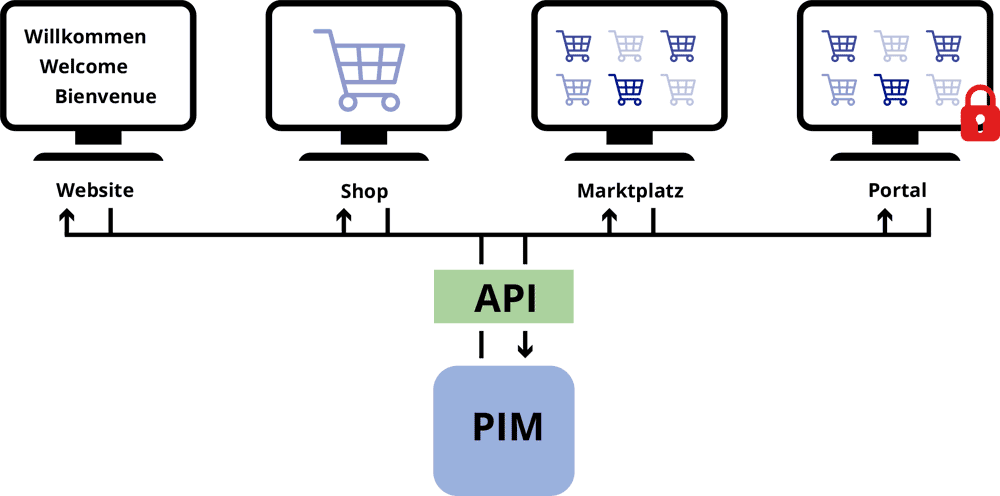
PIM and API: The invisible heroes of international sales
19.12.2024 | Author: Jean-René Thies
In a world in which digital processes are becoming increasingly important, industrial manufacturers that operate globally are faced with a multitude of challenges. It is no longer enough to develop high-quality products - it is just as important to present these products optimally worldwide and market them successfully. This is precisely where product information management systems (PIM) in conjunction with API interfaces really come into their own. These two technologies, often operating in the background, play a decisive role in international sales. But what makes them so indispensable?
The challenge: product data in an international context
Anyone who sells products in different countries knows how complex it is to meet the requirements of global markets. Product data must be available in several languages, take into account different currency systems and units of measurement and also comply with country-specific standards. Added to this are the constant adjustments to regulatory requirements and the need to integrate the data into numerous sales channels - from your own web store to online marketplaces and partner platforms.
The problem
Without a central system that bundles and manages all information, inconsistencies quickly arise. Manual processes and fragmented data sources often lead to outdated or incomplete information reaching the sales department. The result is misunderstandings, an inconsistent brand image and - in the worst case - a loss of trust among customers.
PIM: the linchpin of product data management
A product information management system (PIM) offers precisely the solution to this problem. It serves as a central platform in which all product data is maintained, updated and organized. Imagine being able to manage all your data - from technical specifications and appealing product descriptions to images or videos - in a single place. This is exactly what a PIM makes possible.
But it's about much more than just data management. A PIM really comes into its own when it comes to automating and structuring complex processes.
Here are some of the key benefits:
Centrality
Instead of storing product information in different departments or systems, a PIM provides a central data source.
Multilingualism
Whether you want to present your products in English, Spanish, Chinese or all three languages at the same time, a good PIM can handle the task effortlessly.
Automation
Information can be exported to different channels with a single click. This not only saves companies time, but also minimizes the risk of errors.
API: The invisible bridge between systems
While the PIM system forms the basis for clean data management, the API (Application Programming Interface) ensures that this data communicates seamlessly with the outside world. APIs are the invisible engine that enables the distribution of product information in real time. Without them, the exchange between different systems - such as between your PIM and an online marketplace like Amazon - would be a time-consuming manual process.
The importance of the API becomes particularly clear when you consider the dynamics of global markets. Product information often needs to be updated in real time, whether due to price changes, new regulatory requirements or specific requirements of a partner system. A well-implemented API ensures that these adjustments are made automatically and without errors.

Jean-René Thies is a consultant and project manager at crossbase Germany and Managing Director of our French subsidiary. As a result, he knows his way around the selection and implementation of a PIM system as well as questions that arise during subsequent operation.
Take advantage of his enormous range of knowledge and feel free to contact him with your questions: j.thies@crossbase.de
We respect your privacy
AThis website does not use cookies to collect visitor data or behavior!

